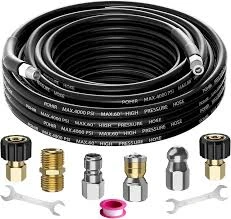Power Steering Hose Connector for Enhanced Vehicle Performance and Fluid Management
Understanding Power Steering Hose Adapters A Comprehensive Overview
Power steering systems are essential components of modern vehicles, providing drivers with the ease of maneuverability required for safe driving. One crucial part of these systems is the power steering hose, and specifically, the power steering hose adapter. This article delves into the significance of power steering hose adapters, their function, considerations when selecting one, and maintenance tips for optimal performance.
What is a Power Steering Hose Adapter?
A power steering hose adapter is a fitting that connects different types of power steering hoses or converts the size or type of hose connections within the power steering system. This adapter is often needed when replacing or upgrading power steering components. It ensures a secure and leak-free connection between various lengths of hoses, pumps, and steering gears. Commonly made from durable materials like aluminum or steel, these adapters are designed to resist wear and corrosion, ensuring longevity under high-pressure conditions.
Function of Power Steering Hose Adapters
The main function of a power steering hose adapter is to facilitate the smooth transfer of hydraulic fluid throughout the power steering system. The hydraulic fluid is essential as it amplifies the driver’s steering input, making it easier to turn the steering wheel and navigate the vehicle. Without a proper connection provided by the hose adapter, the system may leak fluid, causing it to fail and resulting in difficult steering and potential safety hazards.
Additionally, various vehicles may require different hose types based on their power steering systems. For instance, converting a factory setup to an aftermarket system often necessitates an adapter. This versatility allows technicians and car enthusiasts to swap out parts without the need for a complete overhaul of the existing system.
Selecting the Right Adapter
Choosing the correct power steering hose adapter is critical for ensuring the effectiveness and safety of the power steering system
. Factors to consider include1. Compatibility Ensure that the adapter is compatible with both the power steering hose and the vehicle’s power steering components. Mismatched sizes or fittings can lead to leaks and system failure.
2. Material The durability of the materials used in the adapter is paramount. Steel and aluminum are popular choices due to their strength and resistance to corrosion. Consider the vehicle’s operating conditions, including exposure to heavy loads and extreme temperatures.
power steering hose adapter

3. Pressure Rating Power steering systems operate under high pressure. Confirm that the adapter can withstand the pressure produced by your specific system to prevent failures.
4. Installation Some adapters are designed for easy installation, while others may require specialized tools or professional assistance. If you are not comfortable with DIY repairs, it might be best to consult a mechanic.
Maintenance Tips
To ensure the longevity of your power steering hose adapter and the entire power steering system, regular maintenance is essential. Here are some tips
- Check for Leaks Regularly inspect the connections for any signs of leaking fluid. A small leak can quickly escalate into a more serious issue.
- Fluid Quality Use the manufacturer-recommended power steering fluid and change it as advised in your vehicle's maintenance schedule.
- Monitor Performance Be attentive to any changes in steering response. A sudden increase in effort required to turn the steering wheel could indicate a problem within the power steering system or a failing adapter.
- Professional Inspections Periodically have your power steering system checked by a qualified mechanic, especially if you notice any unusual behavior.
Conclusion
Power steering hose adapters play a pivotal role in the functionality and reliability of power steering systems in vehicles. By selecting the right adapter and performing regular maintenance, vehicle owners can ensure their steering systems operate smoothly and efficiently. Understanding the importance of these components not only enhances safety but also prolongs the life of your vehicle's steering system.
-
Reliable Brake Line Solutions for Your VehicleNewsJun.05,2025
-
Quick Fix for Leaky Air Conditioning HosesNewsJun.05,2025
-
Powerful Sewer Jetting Solutions for Tough ClogsNewsJun.05,2025
-
Power Steering Hose Problems SolvedNewsJun.05,2025
-
Hose Protectors That Actually WorkNewsJun.05,2025
-
Essential Hose Connectors for Every HomeNewsJun.05,2025

